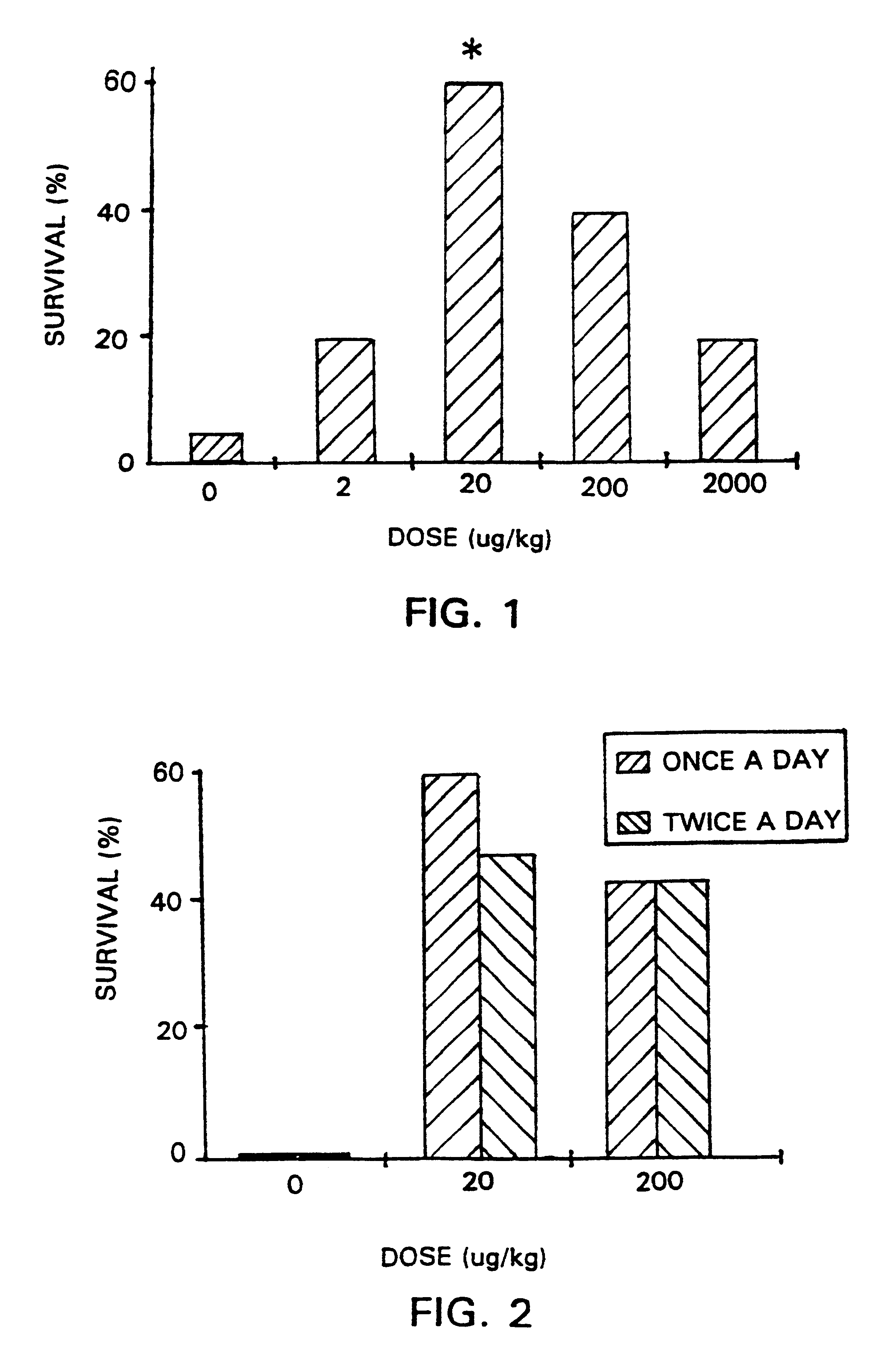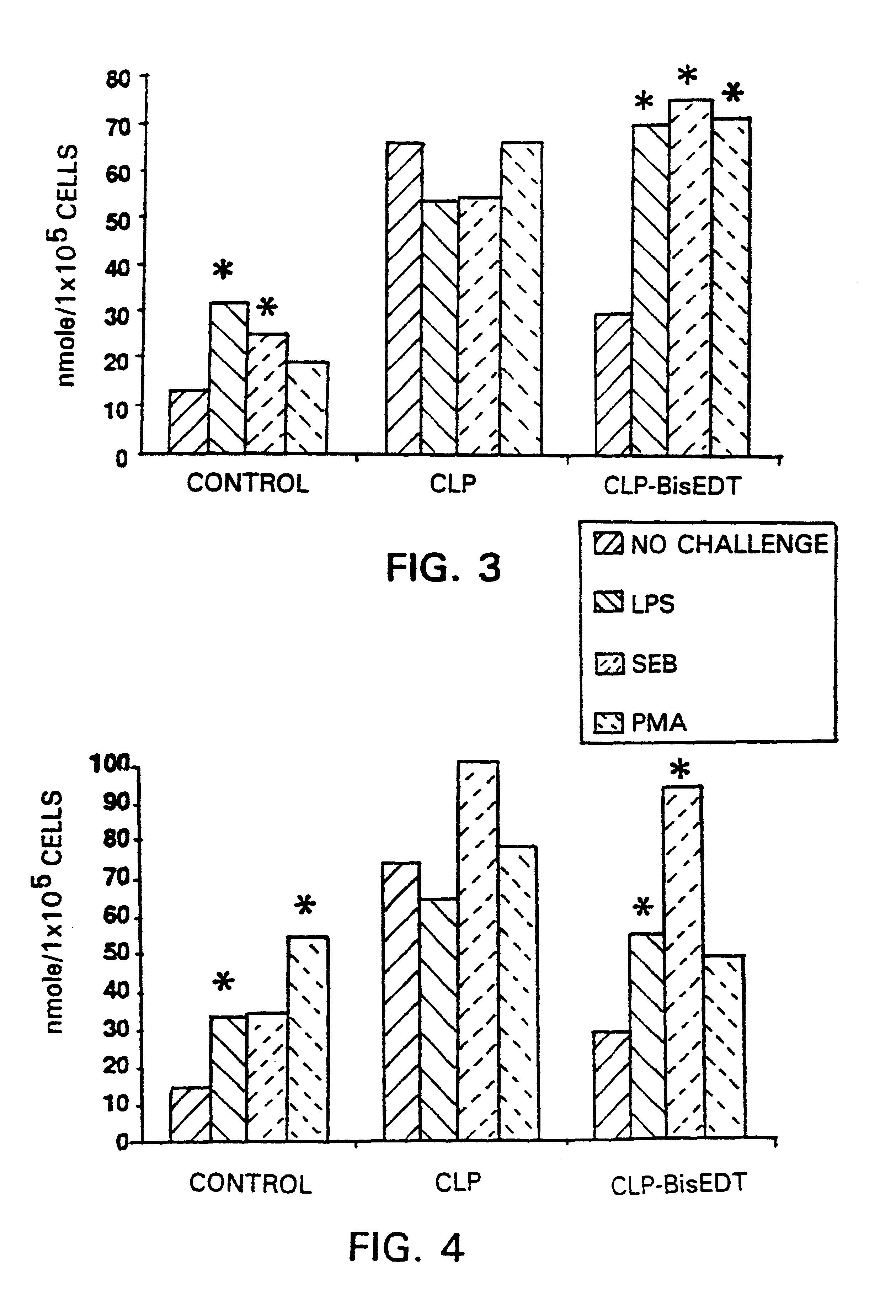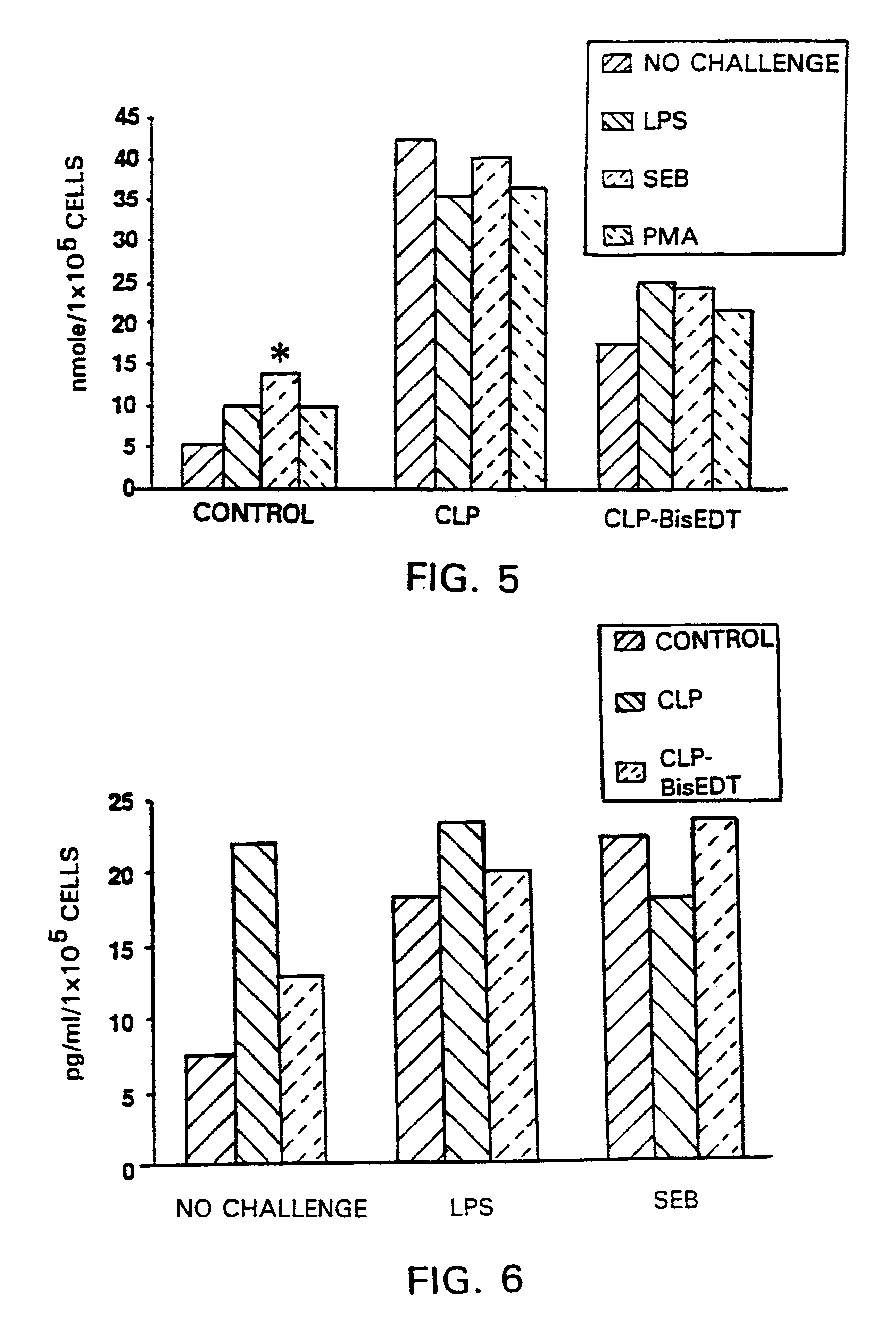Metal-thiols as immunomodulating agents
a technology of metal-thiols and immunomodulating agents, which is applied in the direction of heavy metal active ingredients, heterocyclic compound active ingredients, biocide, etc., can solve the problems of attempting to put this risk into clinical practice, causing significant health-related costs annually, and many therapies used to treat or prevent septic shock
- Summary
- Abstract
- Description
- Claims
- Application Information
AI Technical Summary
Problems solved by technology
Method used
Image
Examples
example 2
Effect of BisEDT on Reactive Radical Release in Sepsis
This study was undertaken to determine the effects of BisEDT on reactive radical release in sepsis. Sepsis was induced in twenty 8-week-old mice by cecal ligation and perforation (CLP). Five hours after CLP, BisEDT in a ratio of 1:2 (Bismuth, 20 .mu.g / kg body weight) was administered via tail vein injections in 10 mice while others received vehicle. Another group received only anesthesia (control, n=9). Eighteen hours after injection the mice were sacrificed, spleens collected, cell harvested and macrophages / monocytes purified by density gradient centrifugation. Macrophages / monocytes were plated in 96-well plates with complete RPMI medium. Superoxide (--O.sub.2 --), hydrogen peroxide (H.sub.2 O.sub.2 at 60 min) and nitric oxide (as nitrite, NO.sub.2 -- at 16 h) production by the macrophages / monocytes were measured with or without stimulating in vitro with lipopolysaccharide (LPS), staphylococcal enterotoxin B (SEB) or phorbol myr...
example 3
Role of Cytokines in Sepsis
This study was undertaken to determine the effects of BisEDT on cytokine release in sepsis. Sepsis was induced in mice by cecal ligation and perforation (CLP). Five hours after CLP, BisEDT in a ratio of 1:2 (Bismuth, 20 .mu.g / kg body weight) was administered via tail vein injections in some mice while others received vehicle. Another group received only anesthesia. Eighteen hours after injection the mice were sacrificed, spleens collected, cell harvested and macrophages / monocytes purified by density gradient centrifugation. Macrophages / monocytes were plated in 96-well plates with complete RPMI medium. Various cytokine serum levels and production by the macrophages / monocytes were measured with or without stimulating in vitro with lipopolysaccharide (LPS), staphylococcal enterotoxin B (SEB), or phorbol myristate acetate (PMA). Data were analyzed using ANOV and Mann-Whitney tests for group and treatment differences (*) were considered significant at p<0.05.
Se...
PUM
| Property | Measurement | Unit |
|---|---|---|
| Fraction | aaaaa | aaaaa |
| Fraction | aaaaa | aaaaa |
| Fraction | aaaaa | aaaaa |
Abstract
Description
Claims
Application Information
 Login to View More
Login to View More - R&D
- Intellectual Property
- Life Sciences
- Materials
- Tech Scout
- Unparalleled Data Quality
- Higher Quality Content
- 60% Fewer Hallucinations
Browse by: Latest US Patents, China's latest patents, Technical Efficacy Thesaurus, Application Domain, Technology Topic, Popular Technical Reports.
© 2025 PatSnap. All rights reserved.Legal|Privacy policy|Modern Slavery Act Transparency Statement|Sitemap|About US| Contact US: help@patsnap.com



